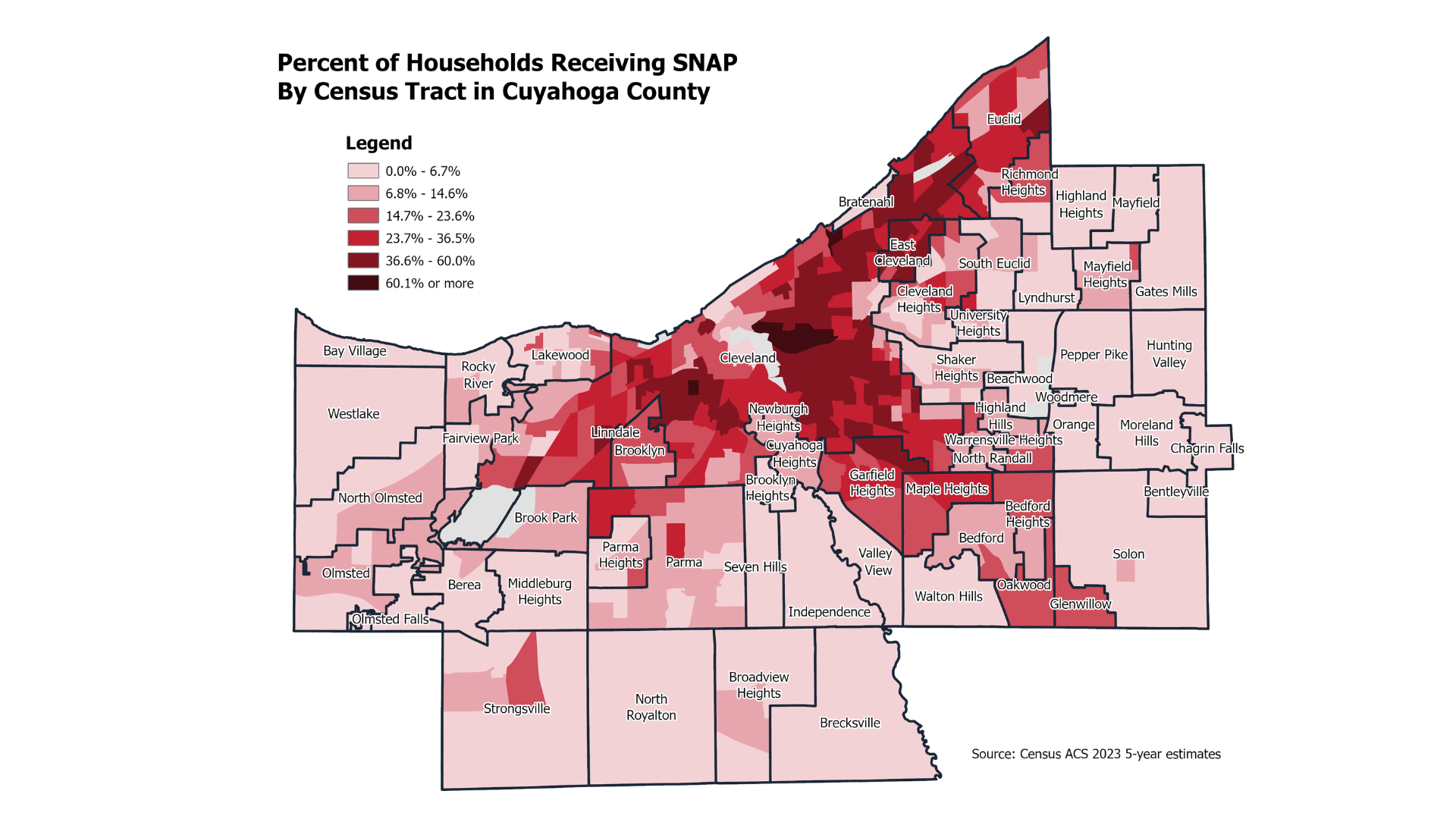Earlier this year, the U.S. Census Bureau announced it would no longer provide state-level hardship data through the Household Pulse Survey (HPS). The final report, released on October 3, included data collected between August 20 and September 16, with 51,280 respondents nationwide and 917 from Ohio. While this sample size offers some confidence in the statewide data, the Census Bureau cautions that the "data is experimental" and advises users to "take caution using estimates based on subpopulations of the data—sample sizes may be small, and the standard errors may be large."
The cessation of state-level data collection poses challenges for policymakers and organizations in Ohio, as they lose access to timely information on economic and social hardships. The HPS provided valuable insights into issues such as employment, food insecurity, mental health, housing stability, and inflation. Without this data, addressing these challenges becomes more difficult.
This brief examines five key indicators, comparing Ohio's data to national figures to assess the state's standing. In each instance, Ohio performed the same or somewhat better than the national average.
Employment
Survey respondents were asked if they had "experienced loss of employment income in the last 4 weeks (for self or household member)." This question is crucial because a loss of employment income directly affects a household's ability to meet basic needs such as housing, food, healthcare, and utilities. An increase in "yes" responses could indicate higher demand for health and human services support. On this question, Ohio fared better than the nation: 10 percent of Ohioans reported a loss of employment income compared to nearly 14 percent of respondents nationwide.
Food insecurity rates tend to be higher in households with children, particularly those with younger children under five.
Food Insecurity
Respondents were asked a series of questions about their household food sufficiency over the prior 7 days, including whether there was "sometimes not enough to eat" or "often not enough to eat." Among households with children under 18, 25 percent of respondents nationally chose the "often" or "sometimes" response, compared to 26 percent in Ohio.
Food insecurity rates tend to be higher in households with children, particularly those with younger children under five. Research demonstrates that food insecurity harms children by impairing their physical growth, educational attainment, cognitive development, and emotional well-being, limiting their ability to thrive and succeed in life.
Mental Health
Understanding the incidence of anxiety and depression is a key indicator of community mental health. The most recent survey asked two questions related to symptoms of anxiety and two related to symptoms of depression. As of the latest data collection period, approximately 21 percent of U.S. adults reported experiencing symptoms of anxiety and/or depression, compared to 19 percent in Ohio.
This percentage reflects a significant decrease from early in the pandemic, indicating an improvement in mental health among the population. However, the prevalence of these symptoms remains higher than pre-pandemic levels, underscoring the ongoing need for mental health support and resources.
Housing Insecurity
According to the U.S. Census, approximately 4.5 percent of U.S. adults reported that they were either "very likely" or "somewhat likely" to leave their home due to eviction within the next two months. The figure for Ohio was 5.2 percent.
Evictions in Columbus, Ohio, are 40 percent higher than before the pandemic.
At the onset of the COVID-19 pandemic, eviction moratoriums were implemented, leading to a decrease in reported eviction likelihood. However, as the moratoriums began to expire in 2021, eviction numbers started to increase in some areas, exceeding pre-pandemic levels. For example, the Eviction Lab reports that evictions in Columbus, Ohio, are 40 percent higher than before the pandemic. In Cleveland, by contrast, evictions are lower than pre-pandemic levels, likely due in part to the city's decision to extend the right to counsel for many tenants facing eviction.
Inflation
While inflation rates have dropped significantly over the past year, a sizable percentage of respondents nationally and in Ohio reported difficulty affording their usual household expenses in the prior 7 days. According to the U.S. Census Bureau, approximately 35 percent of U.S. adults reported having difficulty paying their usual household expenses in the last seven days. For Ohio, during the same period, about 33 percent of adults reported similar difficulties.
These figures worsened between 2022 and 2024, particularly as stimulus funds were depleted, highlighting ongoing financial challenges faced by many households both nationally and within Ohio.
The cessation of state-level hardship data from the Household Pulse Survey marks a significant loss for policymakers, organizations, and advocates in Ohio striving to address critical economic and social challenges. While the final data report provides valuable insights into employment, food insecurity, mental health, housing stability, and inflation, its absence will hinder the ability to respond swiftly and effectively to emerging needs. Moving forward, it is essential to explore alternative data sources and strategies locally or on a state level to ensure that Greater Cleveland and or Ohio continues to have the information necessary to support its residents and foster resilience in the face of ongoing and future challenges.








